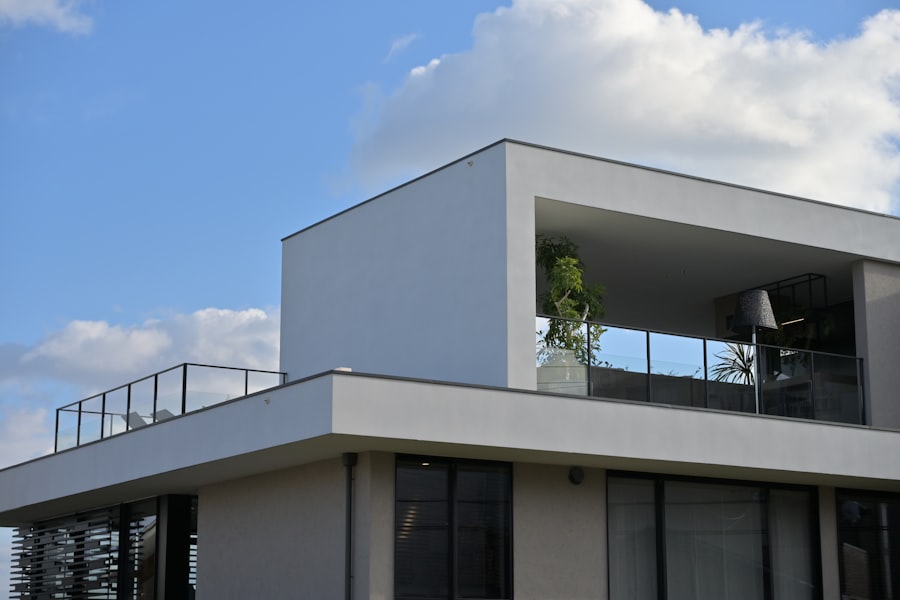Exterior remodeling is a transformative process that enhances not only the aesthetic appeal of a home but also its functionality and value. As homeowners increasingly recognize the importance of curb appeal, the demand for exterior renovations has surged. This trend is driven by a desire to create inviting spaces that reflect personal style while also improving energy efficiency and durability.
Whether it’s updating siding, replacing windows, or adding outdoor living areas, exterior remodeling projects can significantly alter the character of a home and its surroundings. The scope of exterior remodeling can vary widely, from minor updates like fresh paint and new fixtures to major renovations that involve structural changes. Homeowners may choose to undertake these projects for various reasons, including increasing property value, enhancing energy efficiency, or simply refreshing the look of their home.
With the right planning and execution, exterior remodeling can yield impressive results that not only elevate the home’s appearance but also improve its overall performance and longevity.
Key Takeaways
- Exterior remodeling enhances curb appeal and home value by updating the outside appearance.
- Assessing your home’s current condition helps identify necessary repairs and design opportunities.
- Selecting durable, weather-appropriate materials ensures long-lasting and attractive finishes.
- Incorporating landscaping and outdoor living spaces creates functional and inviting environments.
- Collaborating with professionals and understanding permits, budgets, and maintenance is key to a successful remodel.
Assessing Your Home’s Exterior
Before embarking on an exterior remodeling project, a thorough assessment of the current state of your home’s exterior is essential. This evaluation should encompass all visible elements, including siding, roofing, windows, doors, and landscaping. Identifying areas that require repair or replacement is crucial; for instance, cracked siding or worn-out roofing can lead to more significant issues if left unaddressed.
A detailed inspection can help homeowners prioritize which aspects of their exterior need immediate attention and which can be improved over time. In addition to physical condition, homeowners should consider the architectural style of their home and how any proposed changes will align with it. For example, a modern home may benefit from sleek lines and contemporary materials, while a Victorian house might require more traditional elements to maintain its historical integrity.
Understanding the existing design language of your home will guide decisions about materials and finishes, ensuring that any updates enhance rather than detract from the overall aesthetic.
Choosing the Right Materials and Finishes

Selecting appropriate materials and finishes is one of the most critical aspects of exterior remodeling. The choices made here will not only affect the visual appeal of the home but also its durability and maintenance requirements. For instance, when considering siding options, homeowners might choose between vinyl, wood, fiber cement, or brick.
Each material has its own set of advantages and disadvantages; vinyl is low-maintenance and cost-effective, while wood offers a classic look but requires regular upkeep to prevent rot and decay. In addition to siding, other elements such as roofing materials, window frames, and doors should be carefully considered. Metal roofs are gaining popularity due to their longevity and energy efficiency, while asphalt shingles remain a common choice for their affordability.
When it comes to windows, energy-efficient models with double or triple glazing can significantly reduce heating and cooling costs over time. The finish selected for these materials also plays a vital role; for example, choosing a weather-resistant paint or stain can prolong the life of wooden elements exposed to the elements.
Planning for Landscaping and Outdoor Living Spaces
| Metric | Description | Typical Range | Importance Level |
|---|---|---|---|
| Space Allocation | Percentage of total outdoor area dedicated to landscaping vs. living spaces | 40% – 70% | High |
| Sun Exposure | Hours of direct sunlight per day for plant selection and placement | 4 – 8 hours | High |
| Soil Quality | Soil pH and nutrient levels for plant health | pH 6.0 – 7.5 | Medium |
| Water Usage | Estimated daily water consumption for irrigation | 10 – 50 gallons per 100 sq ft | High |
| Plant Diversity | Number of different plant species used | 5 – 20 species | Medium |
| Hardscape Ratio | Proportion of paved or constructed surfaces to total outdoor area | 20% – 50% | Medium |
| Outdoor Living Features | Number of features such as patios, fire pits, seating areas | 2 – 5 features | High |
| Budget Allocation | Percentage of total budget dedicated to landscaping vs. outdoor living | 50% landscaping / 50% outdoor living | High |
| Maintenance Time | Estimated weekly hours required for upkeep | 2 – 6 hours | Medium |
| Seasonal Adaptability | Number of plant species and features suitable for multiple seasons | 70% or more | High |
An exterior remodel is not complete without considering landscaping and outdoor living spaces. These areas can significantly enhance the overall experience of a home by providing functional outdoor environments for relaxation and entertainment. Homeowners should think about how they want to use their outdoor spaces—whether for gardening, hosting gatherings, or simply enjoying nature—and plan accordingly.
This might involve designing patios, decks, or outdoor kitchens that seamlessly integrate with the home’s architecture. Landscaping choices also play a crucial role in the overall aesthetic of the property. Selecting native plants can reduce water usage and maintenance while enhancing local biodiversity.
Hardscaping elements such as walkways, retaining walls, and decorative stones can add structure and visual interest to the landscape. Additionally, incorporating lighting into outdoor spaces can create inviting atmospheres during evening hours, making these areas more usable year-round.
Working with a Professional Contractor
Engaging a professional contractor is often essential for successful exterior remodeling projects. Experienced contractors bring valuable expertise in design, material selection, and construction techniques that can help avoid common pitfalls. They can provide insights into local building codes and regulations, ensuring that all work is compliant with legal standards.
Moreover, a skilled contractor can help streamline the project timeline and manage subcontractors effectively. When selecting a contractor, it’s important to conduct thorough research. Homeowners should seek recommendations from friends or family and check online reviews to gauge a contractor’s reputation.
It’s advisable to interview multiple candidates and request detailed estimates that outline costs for labor and materials. Establishing clear communication from the outset will help ensure that both parties are aligned on project goals and expectations.
Budgeting and Financing Your Exterior Remodel

Budgeting for an exterior remodel requires careful planning and consideration of various factors that can influence costs. Homeowners should start by determining their overall budget and identifying which aspects of the project are most important to them. This might include prioritizing high-impact areas such as siding replacement or window upgrades while deferring less critical improvements like landscaping enhancements.
Financing options for exterior remodeling projects vary widely. Some homeowners may choose to pay out-of-pocket using savings, while others might consider home equity loans or lines of credit to fund larger projects. Additionally, some contractors offer financing plans that allow homeowners to spread payments over time.
It’s essential to evaluate all available options carefully and choose one that aligns with financial goals while minimizing long-term debt.
Permits and Regulations for Exterior Remodeling
Navigating permits and regulations is a crucial step in the exterior remodeling process that should not be overlooked. Many municipalities require permits for significant renovations, especially those involving structural changes or alterations to electrical or plumbing systems. Failing to obtain the necessary permits can result in fines or complications when selling the property in the future.
Homeowners should familiarize themselves with local building codes before starting their projects. This may involve consulting with local government offices or working closely with their contractor, who should have experience dealing with permits in the area. Understanding these regulations not only ensures compliance but also helps homeowners make informed decisions about their remodeling plans.
Maintaining and Caring for Your Newly Remodeled Exterior
Once an exterior remodel is complete, ongoing maintenance is essential to preserve the investment made in the property. Different materials require varying levels of care; for instance, wood siding may need periodic painting or staining to protect against moisture damage, while vinyl siding typically requires only occasional cleaning with soap and water. Regular inspections can help identify potential issues before they escalate into costly repairs.
In addition to material-specific maintenance tasks, homeowners should also consider seasonal preparations for their exteriors. This might include cleaning gutters in the fall to prevent ice dams in winter or checking seals around windows and doors in spring to ensure energy efficiency during warmer months. By establishing a routine maintenance schedule, homeowners can enjoy their newly remodeled exteriors for years to come while safeguarding their investment against wear and tear.




